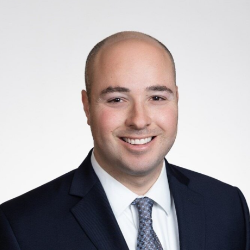This edition of L.E.K. Consulting’s Executive Insights will explore how payers should strategize their approach to glucagon-like peptide-1 agonists (GLP-1s) as they weigh rising consumer demand and increasing pharma supply with recognition of longer-term return on investment (ROI) opportunity.
GLP-1s are on a high and not going anywhere
Public awareness and patient adoption of GLP-1 and gastric inhibitory polypeptide (GIP) agonists have grown in the past couple of years as these medications evolved from Type 2 diabetes treatments to highly effective weight loss drugs approved by the Food and Drug Administration (FDA). As popularity and demand continue to rise for GLP-1s, so do costs — on both a per-unit and total-spend basis. For example, the annualized cost for Ozempic was around $9K in 2020. That has risen to $10K-$12K as of 2023.
GLP-1s are not going anywhere — pharma manufacturers continue to evolve their GLP-1/GIP product offerings (e.g., Eli Lilly’s Zepbound is the newest on the market), and the number of addressable indications is increasing (e.g., recent clinical evidence that may merit further FDA approval of GLP-1s for cardio-metabolic, nephrological and neurological indications). America’s obesity epidemic does not seem to be fading, either, with obesity prevalence in the U.S. increasing from about 31% in 1999 to roughly 42% in 2023. Amid rising demand, payers are grappling with whether and how to provide access to these drugs while balancing near-term costs and long-term savings potential.
Payer coverage of GLP-1s is restricted and limited today
Today, commercial coverage of GLP-1s is limited and government coverage of GLP-1s is off-limits for weight loss. Following in Medicare Part D’s footsteps, commercial insurers have traditionally covered GLP-1s only for Type 2 diabetes diagnoses, while largely denying coverage for weight loss. Estimates suggest that if Medicare were to cover Ozempic for weight loss, it could cost the program $14 billion to $27 billion per year, or about 3% of Medicare’s 2022 spending.
Few commercial payers cover GLP-1s for weight loss alone (e.g., some Blue Cross Blue Shield plans cover Wegovy), and only for certain plans/tiers and if stringent criteria are met (e.g., body mass index (BMI) above a certain threshold). In an attempt to curb GLP-1 prescriptions for weight loss and control rising costs, commercial plans have increased GLP-1 prior authorization requirements (e.g., step therapy). However, this approach has also impacted Type 2 diabetes patients’ access to GLP-1s by requiring some patients to try other diabetes treatments (e.g., blood sugar regulators such as sodium-glucose cotransporter-2 inhibitor Brenzavvy and dipeptidyl peptidase-4 inhibitor Onglyza) before GLP-1 approval.
Payers’ hesitation to cover GLP-1s for weight loss is also fueled by employer plan sponsor concerns about up-front costs of the drugs. Widespread access to GLP-1s for weight loss would be financially unsustainable for many employers. Estimates show that the typical employer could experience around a 50% increase in drug spend if half of the employees eligible for Wegovy were to take the drug.
Employers have largely attempted to avoid these cost increases, with a 2023 Accolade survey finding that approximately 60% of employers do not intend to cover GLP-1s in 2024. However, there are emerging indications that employer sentiment may be shifting, as the survey also found that roughly 80% of human resources decision-makers expressed interest in expanding coverage for GLP-1s. At present, there is a balance payers must achieve across a variety of influencing factors on whether to cover GLP-1s (see Figure 1).











